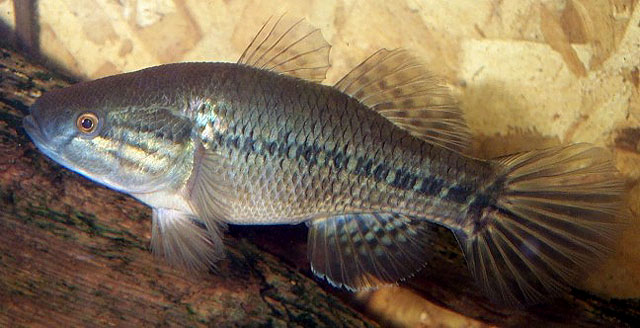| Eleotridae (Bully sleepers) |
| 70 cm TL (male/unsexed) |
|
demersal; freshwater; brackish; marine, amphidromous |
| North to South America: along the Atlantic slope from North Carolina (USA) to southeastern Brazil. |
|
Dorsal spines (total): 1-7; Dorsal soft rays (total): 9-15; Anal spines: 0-1; Anal soft rays: 9-10. A short stubby fish with a conspicuously flat head (Ref. 26938). |
| Adults inhabit marshes, muddy ponds and channels with a salinity range of 0 to 21 ppt (Ref. 7251), up to 38.4 ppt in some cases (Ref. 97140). Mostly found in fresh water but also in brackish mangrove areas. They ascend upstream but remain in the lower reaches. Sexually mature after one year. Gonads develop during the dry season. Average size at maturity is 5.1 cm for males, 4.5 cm for females. Omnivorous, adults feed mainly on plants, sediments and invertebrates. They undergo coloration change during reproduction, carrying out a complex nuptial parade. Adults guard the nest. Egg is 0.3 mm, incubation time is 11 to 16 hours at 27°C (Ref. 35237). |
|
Least Concern (LC); Date assessed: 11 February 2019 Ref. (130435)
|
| harmless |
Source and more info: www.fishbase.org. For personal, classroom, and other internal use only. Not for publication.

